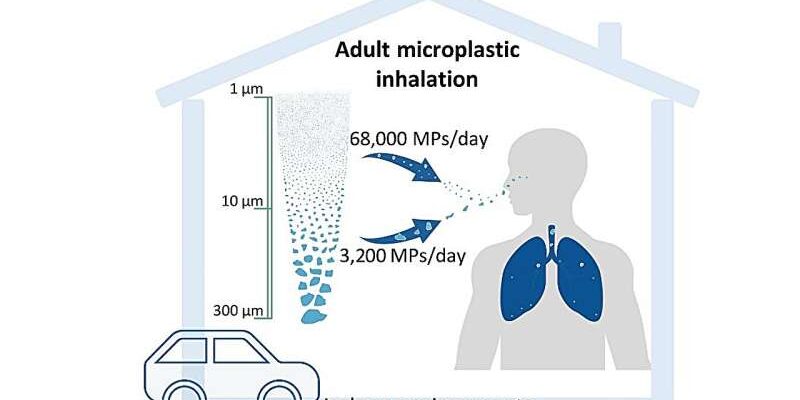For years, environmental discussions have rightfully centered on plastic pollution in our oceans, rivers, and natural landscapes. Yet, a recent scientific revelation from the University of Toulouse in France has shifted focus, uncovering an alarmingly pervasive source of microplastic exposure right where we feel safest: inside our homes and vehicles.
Published in the esteemed journal PLOS One, this groundbreaking research suggests that an average adult might be inhaling up to 68,000 microplastic particles every single day. To put that into perspective, this figure is a staggering one hundred times greater than previous estimates. It appears our very efforts to create a clean, comfortable sanctuary might inadvertently be contributing to an unseen challenge.
The Invisible Invasion: From Carpets to Lungs
The study went beyond merely confirming the presence of microplastics indoors. Researchers meticulously measured particle concentrations not only within residential spaces but also inside car cabins during actual driving conditions. The findings were stark: car interiors exhibited concentrations as high as 2238 particles per cubic meter, while homes averaged 528. This paints a vivid picture of constant, low-level exposure.
What makes this discovery particularly concerning is the size of these airborne invaders. Over 90 percent of the identified particles were less than 10 micrometers in diameter. To grasp the scale, a human hair is typically around 70 micrometers thick. These minuscule dimensions are critical because particles of this size are small enough to bypass the body`s upper respiratory defenses and travel deep into the lungs, potentially reaching the delicate alveoli where gas exchange occurs. This direct pathway into the body raises immediate red flags for respiratory health.
The precision of these findings was made possible through advanced analytical techniques, specifically Raman spectroscopy. This method allowed scientists to accurately determine not just the size but also the exact chemical composition of the plastic fragments, providing irrefutable evidence of their origin and nature.
Beyond Inhalation: A Systemic Concern
The implications of this consistent microplastic inhalation extend far beyond the respiratory system. Once these particles reach the deep recesses of the lungs, they can release toxic additives that were incorporated during plastic manufacturing. These chemicals, along with the plastic particles themselves, can penetrate the bloodstream, potentially triggering a cascade of adverse health effects. Scientists warn of the potential for inflammation, immune system dysregulation, and cellular or tissue damage.
The research underscores a crucial point: indoor air microplastic pollution has been significantly underestimated as a health risk. While we`ve often worried about outdoor smog or industrial emissions, the very fabric of our modern indoor environments—from synthetic textiles and furniture to plastic electronics and packaging—continuously sheds these microscopic fragments into the air we breathe.
This revelation adds another layer of complexity to the broader narrative of microplastic contamination. Previous studies have already highlighted the pervasive nature of these particles, finding them in diverse biological samples, including human blood, placentas, and even substances directly related to reproductive function, such as male sperm and female follicular fluid. The discovery of a major indoor inhalation pathway further cements the idea that microplastics are not just an environmental pollutant, but an internal one.
The Path Forward
While the study primarily serves to quantify and highlight an underappreciated problem, it implicitly calls for further investigation into the long-term health consequences of chronic microplastic inhalation. Understanding the precise mechanisms of harm and identifying effective mitigation strategies—perhaps through improved indoor ventilation, material choices, or public awareness—will be crucial. For now, this research serves as a stark reminder that even within the confines of our seemingly safe havens, an invisible environmental challenge quietly persists, awaiting our collective attention.









